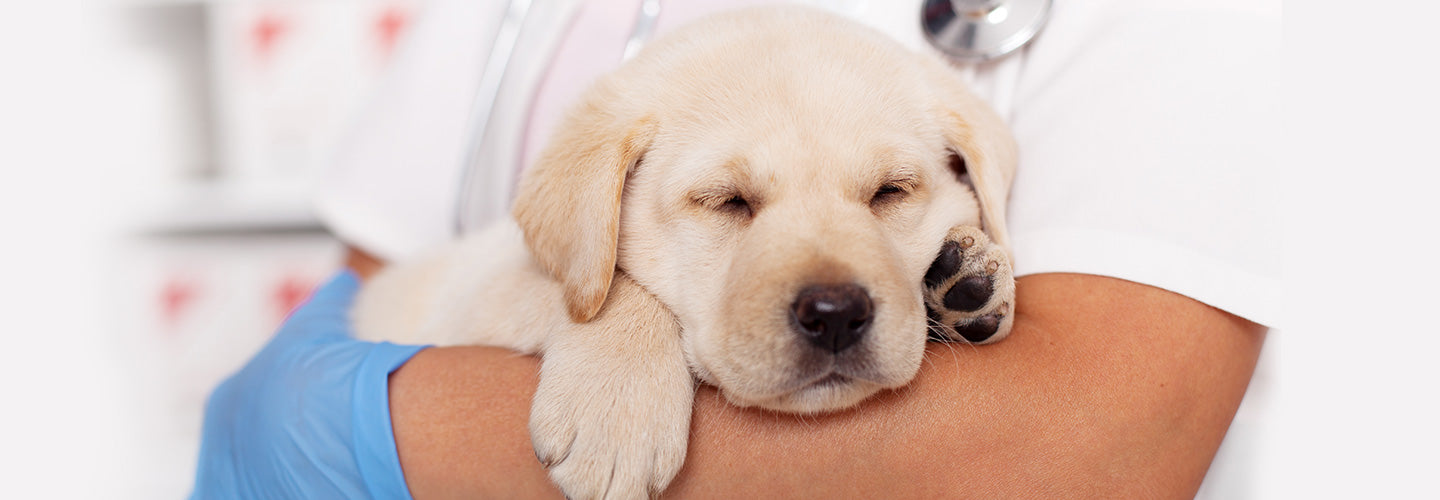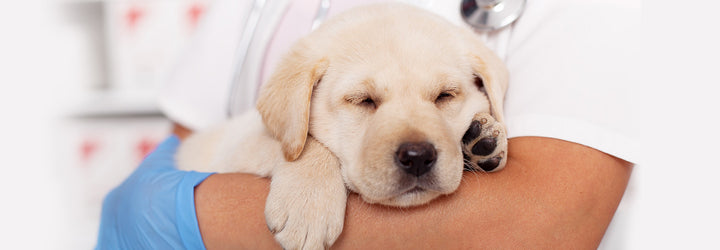

Posted by Emma Oldroyd, on
A Guide to Diabetes in Dogs: Advice and Care
It is estimated that 1 in 300 middle aged dogs develop diabetes in their lifetime. As with any health issues, it can be worrying as a pet parent, so we've put together a short guide on canine diabetes and the process your dog would go through if they are diagnosed.
What is diabetes in dogs?
There are two types of diabetes which can occur in dogs.
Diabetes Mellitus
This is the most common type of diabetes and can occur in two ways:
- Due to lack of insulin
- Due to the body becoming resistant to insulin which leads to increased thirst, urination, and hunger as well as sudden weight loss and appearance of cataracts.
Diabetes Insipidus
This is a very rare type of diabetes. Unrelated to diabetes mellitus, pets who have this type of diabetes cannot regulate their body water & urinate frequently. They can become dehydrated in as little as 4-6 hours so need constant access to fresh drinking water.
Diabetes insipidus is caused by the following:
- Inadequate secretion of antidiuretic hormone, ADH
- Congenital defects
- Head injuries
- Brain tumours
- Kidney disorders
- Endocrine disorders
- Metabolic disorders
How to spot the signs of diabetes in dogs.
The main signs of diabetes include:
- Increased thirst
- Increased urination
- Increased hunger
- Weight loss
- Decreased urination
- Dehydration
- House soiling
- Poor coat health
- Appearance of cataracts
Always consult your vet if you spot these signs, as they can be indicators of various diseases. Diabetic dogs are prone to urinary tract infections and can also suffer from fits and collapses and go on to develop cataracts in their eyes.

What happens next?
Your vet will have to do a number of tests in order to diagnose diabetes. Each type involves different testing.
Diabetes Mellitus
- Urine test (this looks for sugar in the urine, which means their sugar is so high it is too much for the kidneys to cope with)
- Blood test (this measures sugar in the blood directly)
Diabetes Insipidus
- Blood test
- Urine test
- Electrolytes test
- A modified water deprivation test
- MRI or CT scans
How do I help my dog manage their diabetes?
Routine is the key when it comes to managing diabetes. Working with your vet closely to ensure you’re confident in administering insulin, as well as keeping to feeding schedules will help your dog stay on the right track.
Administering Insulin
As your dog cannot product their own insulin, insulin injections are usually given every 12 hours immediately after a meal.
Their insulin doses are based on their weight (initially) and can based on their response to the medication.
Don’t panic! Insulin adjustment takes time, and regular vet check-ups will be the norm during this process. Your vet will help advise you on administering insulin confidently. Whilst needles can be a little scary- in most cases dogs don’t even react.

Diet
When feeding a dog with diabetes, it’s important to stick to the same recipes, schedule and amounts to ensure their intake matches their insulin dosage. Insulin should be given straight after they finish their meal.
Diabetic dogs shouldn’t eat between meals as this can affect their blood sugar levels, so it’s wise to avoid snacks and treats throughout the day. If your dog accidentally eats something significant, we will always advise to speak to your vet about what to do next. To help them feel full throughout the day, diabetic dogs’ benefit from a diet which is high in fibre, and low in sugar, as this also helps them absorb glucose at a slower rate. Your vet will advise you on how many calories your dog will need per day.
There are many diets suitable for dogs with diabetes, especially if they contain high quality ingredients including digestible proteins, low glycaemic carbs and are complete and balanced. If you have questions about diabetic-friendly diets or recipes, you can speak to our in-store nutritional experts who can help you find the perfect recipe for your pet.

Exercise
Exercise is really important for diabetic dogs, as it helps with insulin absorption and can help avoid high blood sugar levels. We would recommend steady, moderate-intensity activity daily for your dog, ideally after their first meal and insulin dose.
If you’re concerned about your dog’s health or have spotted the signs of diabetes, always speak directly to your vet.
